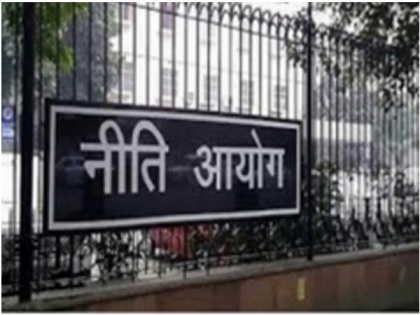Shimla tops in NITI Aayog progress index for meeting sustainable development goals
By ANI | Published: November 24, 2021 02:43 AM2021-11-24T02:43:31+5:302021-11-24T02:50:02+5:30
Shimla has topped the NITI Aayog's Sustainable Development Goal (SDG) index that ranks 56 urban areas on progress towards meeting SDG indicators related to ending poverty, zero hunger, good health and well being, quality education, gender equality among others.

Shimla tops in NITI Aayog progress index for meeting sustainable development goals
Shimla has topped the NITI Aayog's Sustainable Development Goal (SDG) index that ranks 56 urban areas on progress towards meeting SDG indicators related to ending poverty, zero hunger, good health and well being, quality education, gender equality among others.
In 2015, the UN General assembly set the target of meeting 17 SDG goals by 2030 and the latest index measures the urban centres on 15 out of the 17 goals.
NITI Aayog launched the inaugural SDG Urban Index and Dashboard (2021-22) on Tuesday. The index and dashboard (2021-22) are a result of the NITI Aayog-GIZ and BMZ collaboration focused on driving SDG localization in our cities, under the umbrella of Indo-German Development Cooperation, said a press statement by NITI Ayog.
A total of 56 urban areas were considered for computation. Out of the 56 urban areas, Shimla tops the Index followed by Coimbatore and Chandigarh, said the press release.
The SDG Urban Index and Dashboard rank 56 urban areas 77 SDG indicators across 46 targets of the SDG framework. The data on these indicators have been sourced from official data sources such as NFHS, NCRB, U-DISE, data portals of various ministries, and other government data sources, added the press release.
The index and dashboard will further strengthen SDG localization and institute robust SDG monitoring at the city level. It highlights the strengths and gaps of ULB-level data, monitoring, and reporting systems, as per the press statement.
Tools such as this index and dashboard will contribute to the creation of an ecosystem in which all stakeholders will be equipped to adopt and implement data-driven decision making. This transformative change is quite essential, given the increasing prominence of our cities and urban areas in charting the future of development in India, according to the statement.
"Cities are fast becoming engines of growth. The SDG Urban index and dashboard, a product of an innovative partnership between NITI Aayog and GIZ, will go a long way in instituting a robust SDG monitoring system in our cities, and is a milestone step in our SDG localisation journey," Rajiv Kumar, Vice Chairman, NITI Aayog said during the launch.
With one-third of the journey towards achieving the 2030 Agenda behind us, measuring progress on the SDG in urban areas is critical. On this theme, Sanyukta Samaddar, Nodal Officer (SDG), said that NITI Aayog, "seeks to empower local administrations to adopt a measurement-based approach to decision making. Only if the SDG agenda is adopted by the last mile stakeholders can we hope to achieve the global 2030 Agenda. The SDG Urban Index is one more step towards localising the SDGs further."
On the Indo-German Partnership on Sustainable Development Goals, Claudia Warning, DG BMZ said that it will, "focus on deepening SDG localisation and monitoring, and addressing critical gaps in institutional capacity and data systems on SDGs at national and state levels. We look forward to strengthening this partnership with NITI Aayog in building capacities on SDGs."
Out of 56 urban areas ranked in the index, 44 are with a population of above one million. 12 are State capitals with a population of less than a million.
While for some indicators, "urban area" implies ULBs, in other cases, it refers to all urban areas within a district collectively. This is owing to the usage of different data sets which have collated urban data at different administrative units.
However, for any given indicator, the same definition has been used for all urban areas.
The top ten urban areas include--Shimla (Himachal Pradesh), Coimbatore (Tamil Nadu) Chandigarh (Chandigarh), Thiruvananthapuram (Kerala), Kochi ( Kerala), Panaji (Goa), Pune (Maharashtra), Tiruchirapalli (Tamil Nadu), Ahmedabad (Gujarat), Nagpur (Maharashtra).
The bottom urban areas include--Faridabad (Haryana), Kolkata (West Bengal), Agra (Uttar Pradesh), Kohima (Nagaland), Jodhpur (Rajasthan), Patna (Bihar), Guwahati (Assam), Itanagar (Arunachal Pradesh), Meerut (Uttar Pradesh), Dhanbad (Jharkhand).
( With inputs from ANI )
Disclaimer: This post has been auto-published from an agency feed without any modifications to the text and has not been reviewed by an editor
Open in app